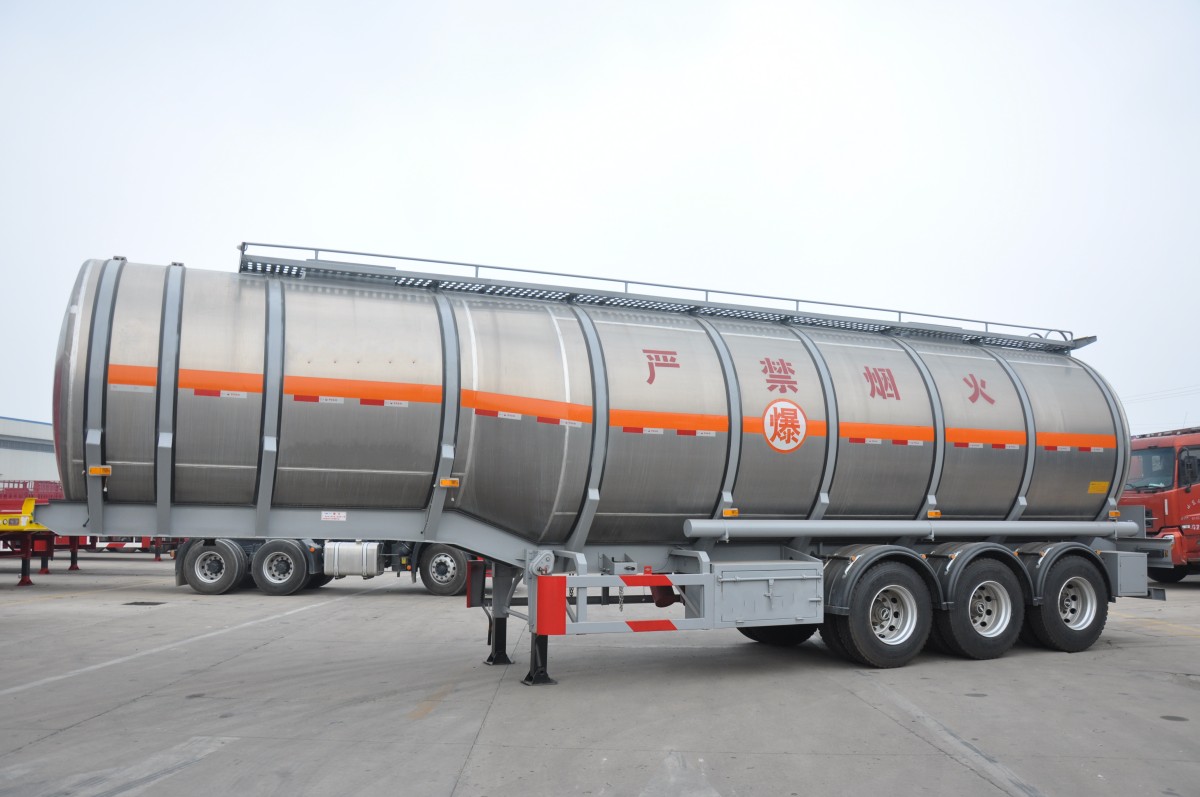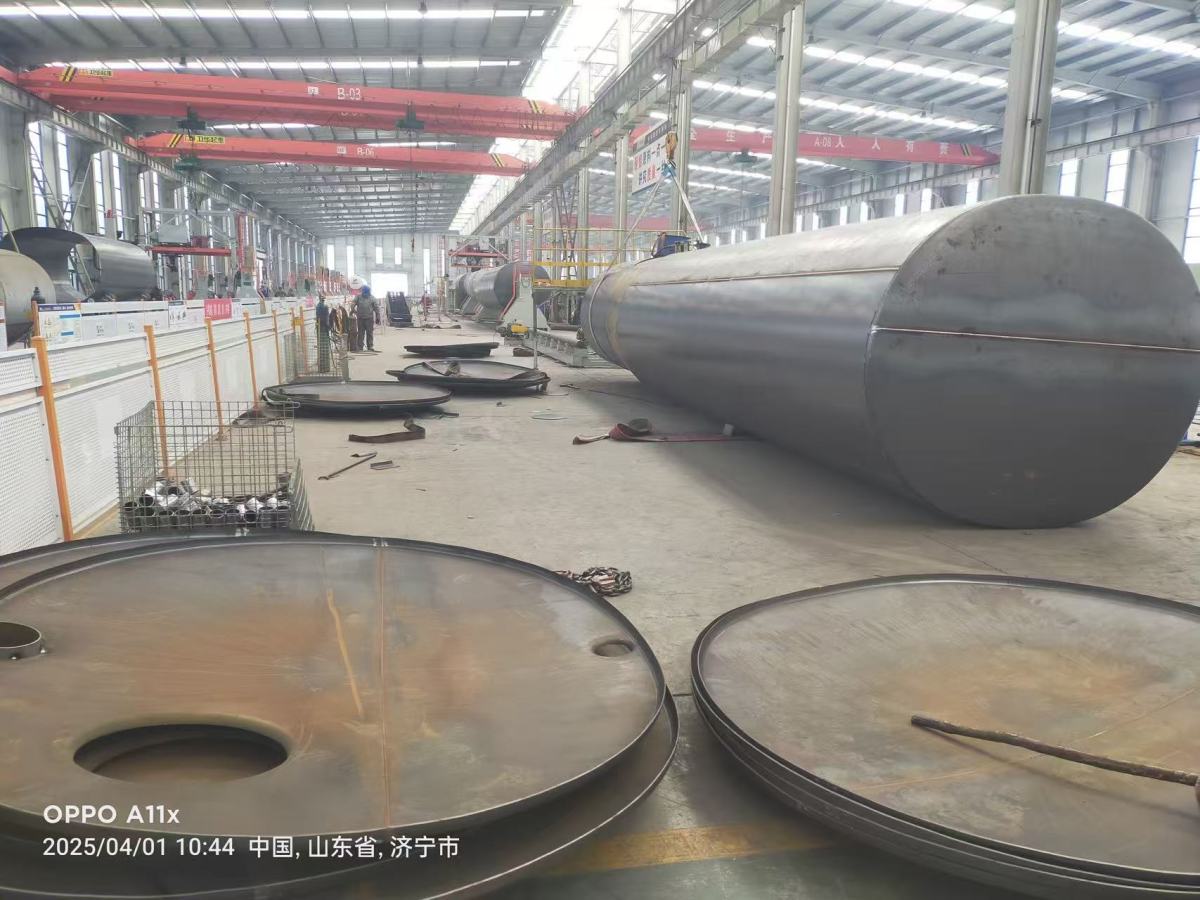Fuel tanker Semi-trailer
As a professional in the logistics industry for many years, I often encounter various types of transport vehicles, among which Fuel tanker semi-trailer are a common one. This type of vehicle plays a significant role in modern industry and transportation, especially in the long-distance transportation and storage of oil products. Today, I'd like to talk to you all about the relevant knowledge of Fuel tanker semi-trailer, including their structural features, usage advantages, and precautions during actual operation. I hope this can help you better understand the working principle and application scenarios of this professional vehicle.

I. Structural Features of Fuel Tanker Semi-trailer
Vehicle composition
The Fuel tanker semi-trailer consists of two main parts: the cab and the oil tank body. The cab is located at the front end and is responsible for controlling and driving the vehicle. The oil tank section is mounted on the vehicle chassis and is specifically used for storing and transporting oil products. Unlike fully Fuel tanker trailer, the oil tanks of Fuel tanker semi-trailer are not completely independently hung on the chassis but are connected to the towing vehicle through a connection device.
2. Oil tank design
Oil tanks are generally made of metal materials, with steel or aluminum alloy being the most common, which have excellent corrosion resistance and pressure-bearing capacity. Oil tanks are usually cylindrical in shape, with their lengths and diameters designed according to transportation requirements to ensure stability during transportation. There will be multiple detection ports, ventilation holes and discharge valves on the surface of the oil tank to ensure operational safety and facilitate maintenance.
3. Connection device
The hanging devices of semi-trailer oil tankers mainly include hooks, brackets and buffer devices, ensuring the stability and safety of the oil tank during transportation. These connection parts allow the oil tank to reduce vibration and swaying when passing through rough roads or turning, enhancing the overall stability.

Ⅱ. Advantages of Using Fuel Tanker Semi-trailer
High transportation flexibility
Compared with fully Fuel tanker trailer, the trailer structure of Fuel tanker semi-trailer offers greater flexibility. After reaching the destination, the driver can quickly separate the oil tank from the towing vehicle, facilitating loading and unloading operations in narrow or complex areas. This is particularly important for the delivery of oil products to remote or space-limited areas.
2. Convenient for maintenance and management
Because the oil tank and the tractor are of a separate structure, the maintenance work becomes much simpler. Oil tanks can be cleaned, inspected and repaired independently without having to disassemble the entire vehicle. This not only saves time but also reduces maintenance costs.
3. Adapt to diverse transportation demands
Different types of oil have different transportation requirements, such as different temperatures, pressures and safety measures. Fuel tanker Semi-trailer can be equipped with different tank capacities and safety devices as needed to meet diverse logistics demands.
4. Enhance transportation safety
Oil products are flammable and prone to leakage. When Fuel tanker semi-trailer are designed, safety factors are fully considered, including efficient ventilation and exhaust systems, emergency pressure relief devices and anti-corrosion materials, thereby reducing the risk of accidents during transportation.

Ⅲ. Operating and Safety Precautions for Fuel Tanker Semi-trailer
Loading and unloading standards
When loading and unloading oil products, the operating procedures should be strictly followed. The discharge valve of the oil tank must be ensured to be well sealed to prevent oil leakage. During the loading process, the speed should be controlled to prevent the oil from splashing out due to impact or damaging the oil tank.
2. Transportation safety
When driving a Fuel tanker semi-trailer, attention should be paid to the balance and stability of the vehicle. As the weight of the oil tank varies under different loading conditions, drivers need to adjust their driving style according to the load to avoid accidents caused by sharp turns or sudden braking.
3. Regular testing
The sealing performance and safety devices of oil tanks need to be inspected regularly. Through detection, problems such as corrosion, cracks or leakage can be identified in a timely manner, and maintenance measures can be taken in advance to ensure safety during transportation.
4. Comply with regulations
Although regulations vary from region to region, vehicles transporting oil products generally need to meet certain safety standards. Compliance with relevant regulations not only ensures traffic safety, but also protects the environment and public safety.

Ⅳ. Application Scenarios and Future Development
Semi-trailer oil tankers are widely used in multiple fields such as oil fields, gas stations, industrial enterprises, and logistics distribution. It plays an important role in the large-scale transportation, storage and supply chain management of oil products. With the continuous advancement of technology, future semi-trailer oil tankers may make breakthroughs in intelligence, environmental protection and other aspects. For instance, adopting more environmentally friendly materials, integrating intelligent monitoring systems, and optimizing the hanging structure, etc., will all bring more convenience and security guarantees to the industry.
In summary, semi-trailer oil tankers have gained a foothold in the oil transportation industry due to their flexible structure, convenient maintenance and high safety. Understanding its structural features and operational norms can help enhance the efficiency and safety of daily transportation and better meet the constantly changing logistics demands. In the future, with the continuous development of technology, semi-trailer oil tankers are expected to achieve greater breakthroughs in safety, environmental protection and intelligence, bringing new development opportunities to the oil transportation industry.
Mr. Owen Zhang
owen@vehiclemaster.com
+86 15269108961

Get real-time quotes
Interested? Leave your contact details.
